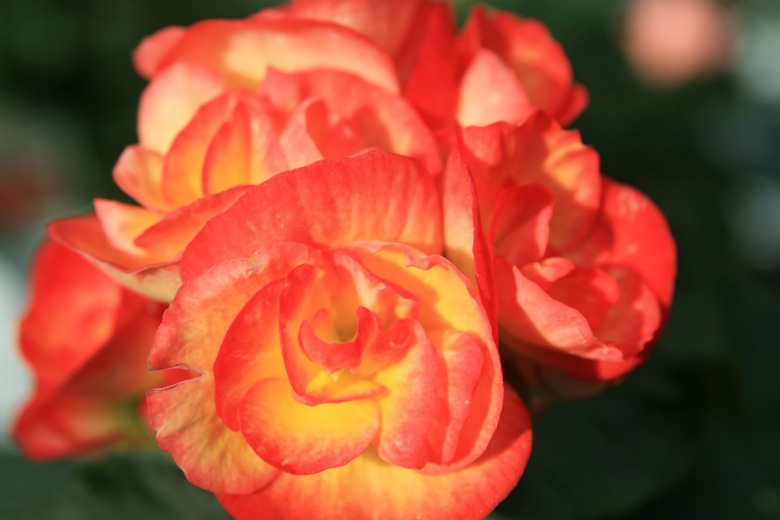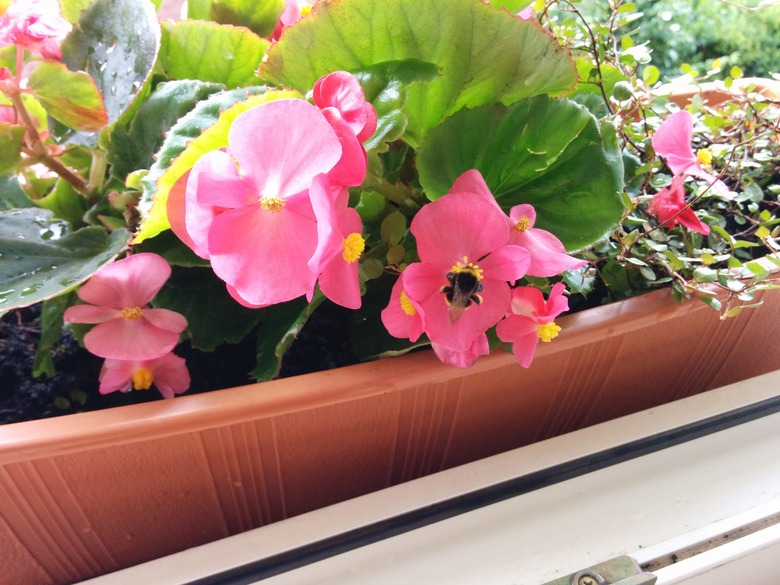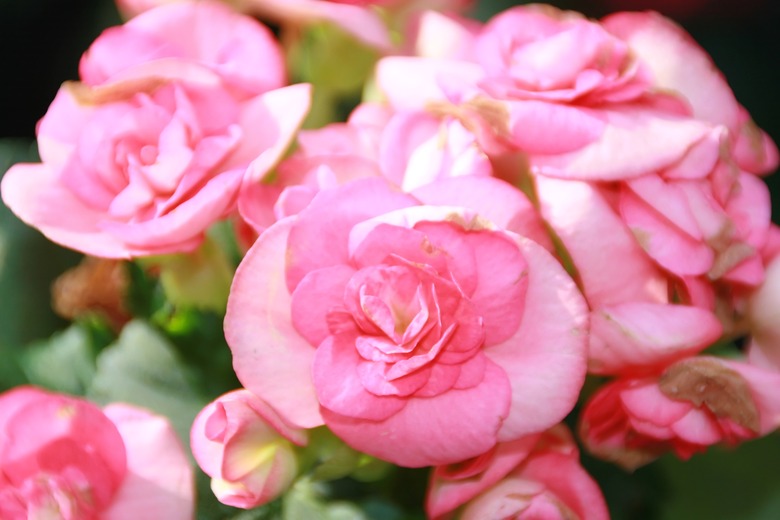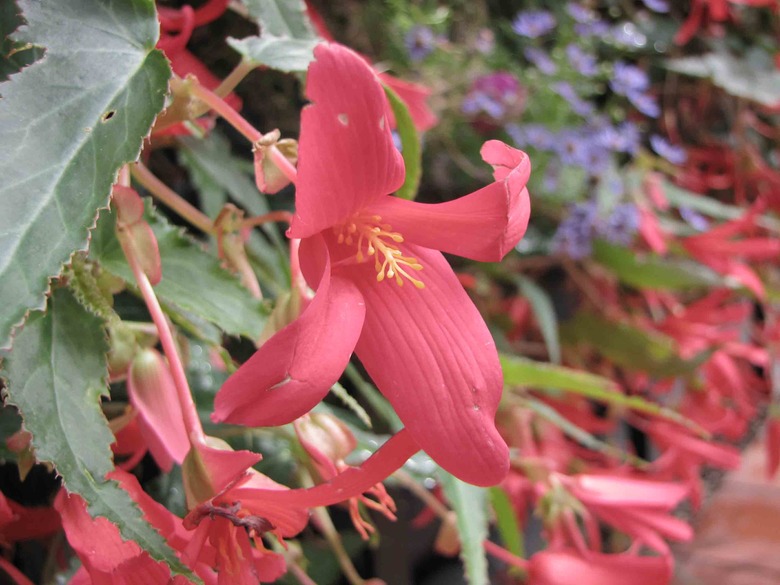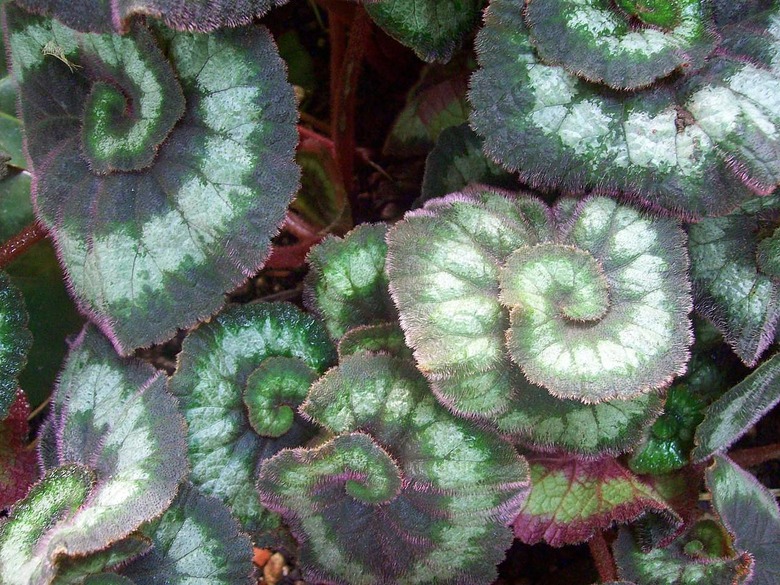The Parts Of A Begonia Flower
Hanging baskets full of bright white, pink or red flowering begonias (Begonia spp.) or houseplants with spectacular green foliage brighten a room. These bloomers are generally hardy annuals outdoors in USDA zones 8b to 11, though a few begonia varieties overwinter in slightly colder climates.
Bring begonia flowers indoors in the cool months to grow them as year-round perennials, but keep in mind that the roots, tubers and rhizomes of these plants are toxic to humans and animals, according to the ASPCA.
Anatomy of Begonia Flowers
The many types of begonia plants have six main parts.
- The pistil, a bowling pin-shaped structure in the middle of the flower, is the female organ.
- The stamen is the male organ.
- The petals, collectively called the corolla, attract pollinators with nectar and fragrance.
- The sepals, together called the calyx, are the smaller, usually green, petals around the base of the flower.
- The receptacle is the structure that holds the sepals.
- The pedicel is the flower stalk.
The petals on begonias are actually tepals, or petals that look exactly like the sepals. The University of Florida IFAS Extension reports that some begonias have monoecious flowers, meaning they have both female and male flowers on the same plant, but not the same flower. Plants that are exclusively male or female are dioecious.
Begonia blooms are typically single or double in shades of pink, red, orange, yellow and white. Deadheading the blooms when they die promotes new growth.
Compact Wax Begonias
Wax begonias (Begonia x Semperflorens-cultorum) are compact plants with bronze to green leaves and pink, white or red flowers.
Female flowers have four or five petals that appear to be equal in length, but may vary slightly. Male begonia flowers have four unequal petals, two long and thin and two oblong, and numerous yellow stamens.
The 'Party Pink' cultivar has bronze leaves and pink flowers, while the 'Barbara Rogers' cultivar grows almost 5 feet tall and has white flowers with bloom times that last throughout the growing season.
Showy Tuberous Begonias
This group of begonias includes 13 types of flowering plants with showy flowers.
Some varieties of tuberous begonias (Begonia tuberosa Group) including Begonia grandis (Begonia grandis) are perennials in USDA hardiness zones 6 to 10. Named for the thickened underground part of the stem, or tuber, this variety has round leaves with pale undersides or red veins.
The apricot, pink, white and red flowers have differing numbers of petals and petal types and resemble camellias or carnations. Rieger begonias (Begonia x hiemalis), a cross between tuberous and wax begonias, are prized for their abundant flowers.
Cane or Angel Wing Begonias
Cane begonias (Begonia coccinea, B. albo-picta, B. lubbersii) have straight, thick stems resembling bamboo and fibrous, mat-like roots.
Prized for their white, pink or red clusters of flowers that trail from the ends of stems, cane begonias like the angel wing (Begonia 'Argenteo-guttata') and dragon wing (Begonia boliviensis) varieties are among the easiest to grow indoors, according to horticulturist Cindy Haynes of Iowa State University.
The asymmetrical, variegated or spotted leaves with red undersides of these beautiful begonias are as attractive as the flowers. Like other begonias grown in cooler areas, cane begonias are annuals when planted in the garden.
Colorful Rhizomatous Begonias
Rhizomatous begonias, named for their thick, horizontal stems called rhizomes, are prized for their foliage, not their usually unremarkable pink or white flowers.
Rex begonias (Begonia × rex-cultorum), a name that includes many hybrids, have especially colorful leaves. In addition to a metallic sheen, leaves of these Rex begonia hybrids are green, gray, lavender, silver and shades of red, as well as a maroon that's so dark it appears black. They can be variegated, heart- or wing-shaped, round and fuzzy. Some rhizomatous begonias have leaves up to 2 feet in diameter.
References
- UF IFAS Gardening Solutions: Begonias
- ASPCA: Begonia
- Colorado Master Gardener: Plant Structures
- UC Museum of Paleontology: UMCP Glossary
- UF IFAS Extension: A Beginner's Guide to Begonias
- North Carolina Extension Gardener Plant Toolbox: Begonia (Semperflorens-Cultorum Group)
- North Carolina Extension Gardener Plant Toolbox: Begonia (Tuberosa Group)
- Iowa State University Extension and Outreach: Begonias for Indoors or Outdoors
- University of Minnesota Extension: Begonia
